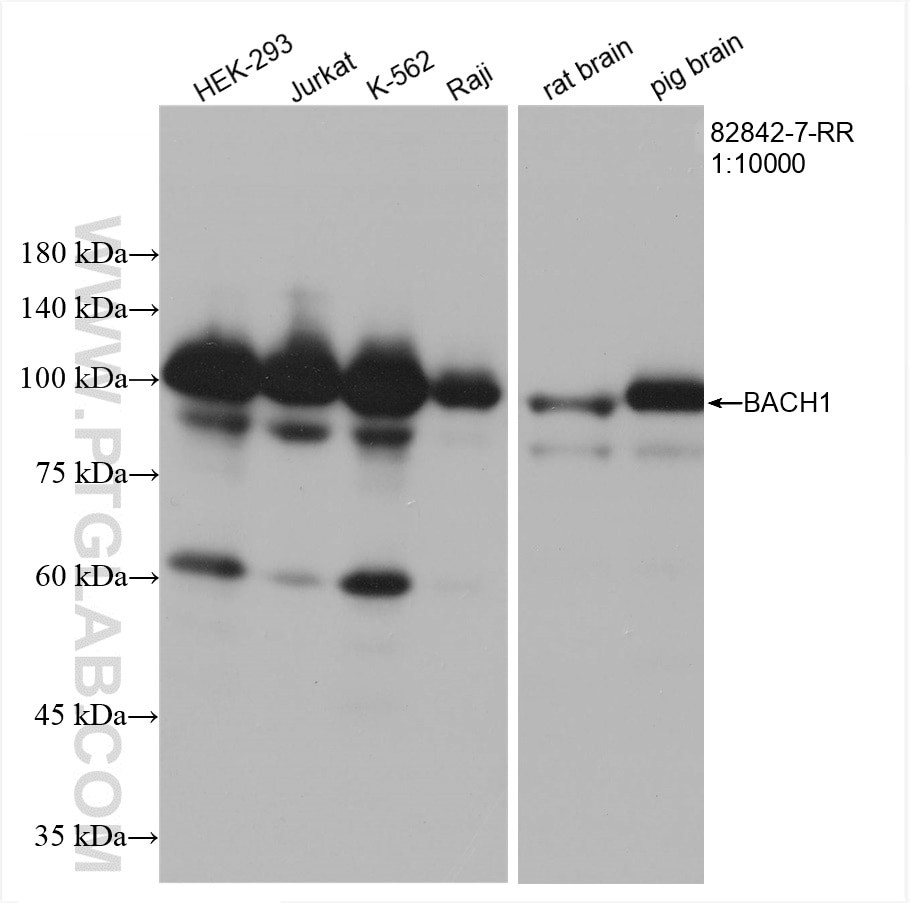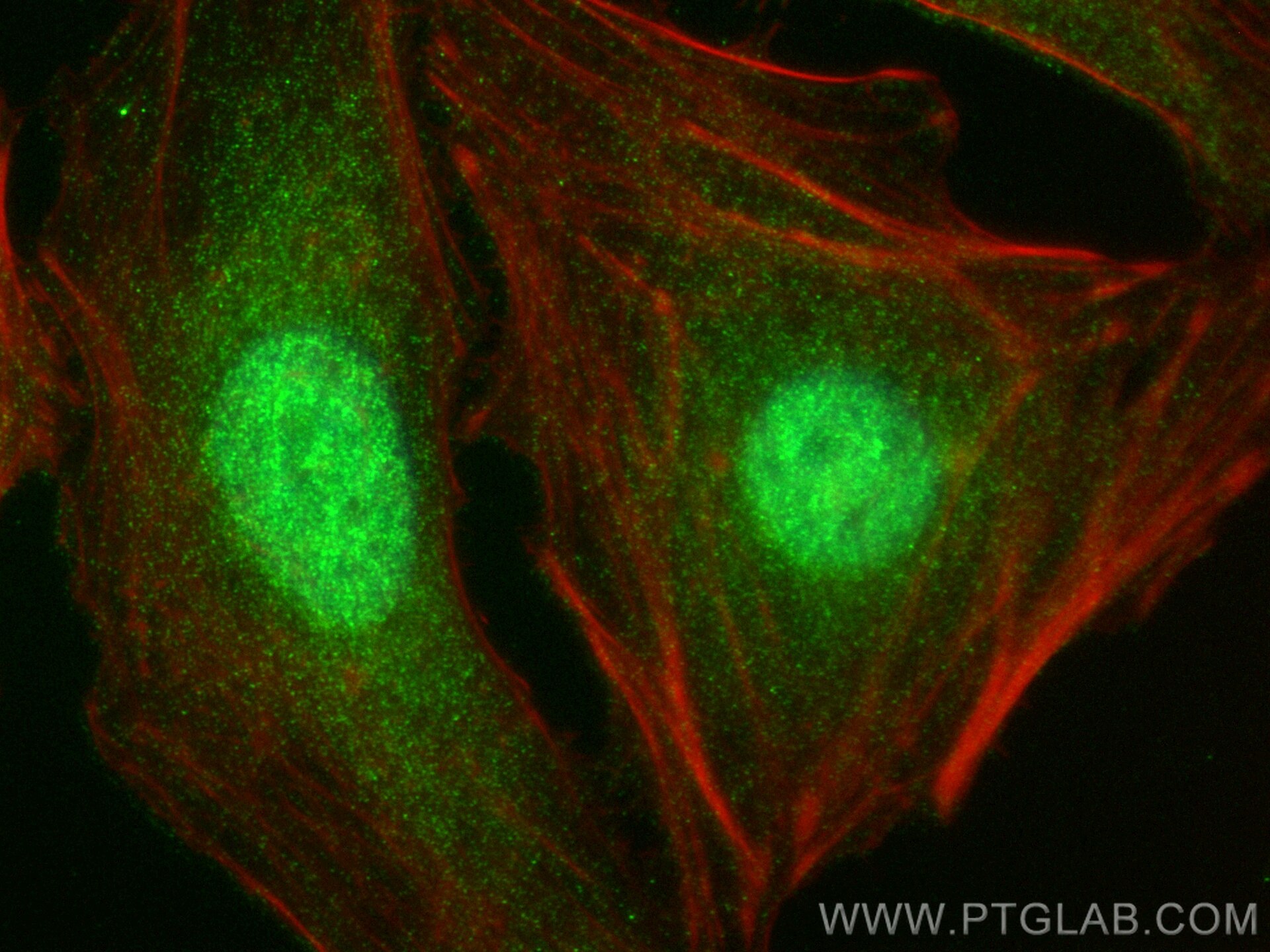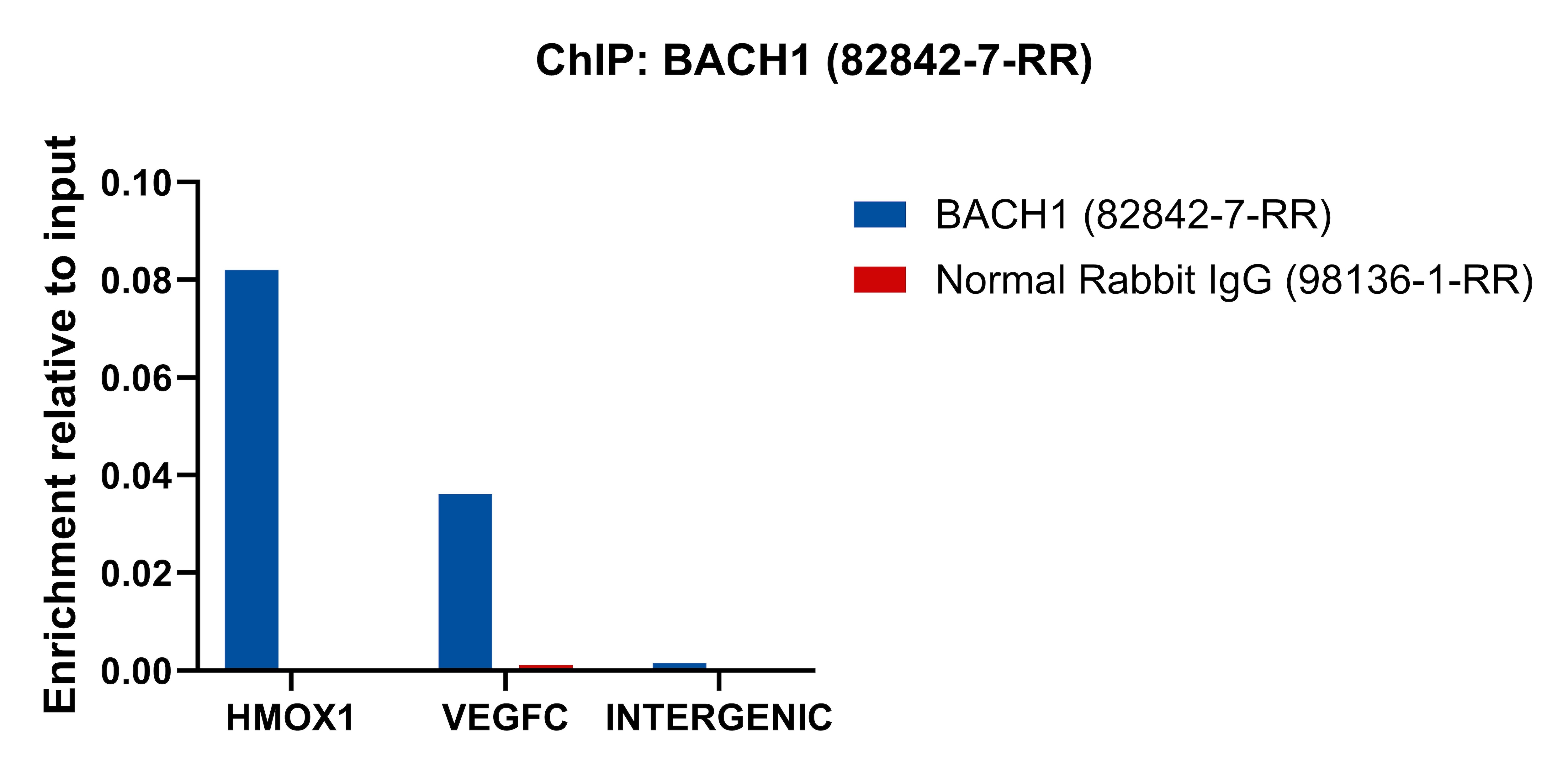Tested Applications
| Positive WB detected in | HEK-293 cells, Jurkat cells, K-562 cells, Raji cells, rat brain tissue, pig brain tissue |
| Positive IF/ICC detected in | HeLa cells |
| Positive ChIP-qPCR detected in | K-562 cells |
Recommended dilution
| Application | Dilution |
|---|---|
| Western Blot (WB) | WB : 1:5000-1:50000 |
| Immunofluorescence (IF)/ICC | IF/ICC : 1:50-1:500 |
| CHIP-QPCR | CHIP-QPCR : 1:10-1:100 |
| It is recommended that this reagent should be titrated in each testing system to obtain optimal results. | |
| Sample-dependent, Check data in validation data gallery. | |
Product Information
82842-7-RR targets BACH1 in WB, IF/ICC, ELISA, ChIP-qPCR applications and shows reactivity with human, rat, pig samples.
| Tested Reactivity | human, rat, pig |
| Host / Isotype | Rabbit / IgG |
| Class | Recombinant |
| Type | Antibody |
| Immunogen |
CatNo: Ag5128 Product name: Recombinant human BACH1 protein Source: e coli.-derived, PGEX-4T Tag: GST Domain: 387-736 aa of BC063307 Sequence: SSVEREVAEHLAKGFWSDICSTDTPCQMQLSPAVAKDGSEQISQKRSECPWLGIRISESPEPGQRTFTTLSSVNCPFISTLSTEGCSSNLEIGNDDYVSEPQQEPCPYACVISLGDDSETDTEGDSESCSAREQECEVKLPFNAQRIISLSRNDFQSLLKMHKLTPEQLDCIHDIRRRSKNRIAAQRCRKRKLDCIQNLESEIEKLQSEKESLLKERDHILSTLGETKQNLTGLCQKVCKEAALSQEQIQILAKYSAADCPLSFLISEKDKSTPDGELALPSIFSLSDRPPAVLPPCARGNSEPGYARGQESQQMSTATSEQAGPAEQCRQSGGISDFCQQMTDKCTTDE Predict reactive species |
| Full Name | BTB and CNC homology 1, basic leucine zipper transcription factor 1 |
| Calculated Molecular Weight | 82 kDa |
| Observed Molecular Weight | 100-110 kDa |
| GenBank Accession Number | BC063307 |
| Gene Symbol | BACH1 |
| Gene ID (NCBI) | 571 |
| ENSEMBL Gene ID | ENSG00000156273 |
| RRID | AB_3086551 |
| Conjugate | Unconjugated |
| Form | Liquid |
| Purification Method | Protein A purification |
| UNIPROT ID | O14867 |
| Storage Buffer | PBS with 0.02% sodium azide and 50% glycerol, pH 7.3. |
| Storage Conditions | Store at -20°C. Stable for one year after shipment. Aliquoting is unnecessary for -20oC storage. 20ul sizes contain 0.1% BSA. |
Background Information
BTB and CNC homology 1, basic leucine zipper transcription factor 1(BACH1) is a heme-regulated transcriptional regulator that acts as a repressor or activator and a member of the AP-a superfamily. MafK belongs to the small Maf family that can function as transcriptional activators or repressors depending on the proteins with which they form heterodimers. BACH1 has crucial roles in both stress responses and transformation by H-RasV12. The molecular weight of expected mobility Bach1 is 100-110 kDa.
Protocols
| Product Specific Protocols | |
|---|---|
| IF protocol for BACH1 antibody 82842-7-RR | Download protocol |
| WB protocol for BACH1 antibody 82842-7-RR | Download protocol |
| Standard Protocols | |
|---|---|
| Click here to view our Standard Protocols |
Reviews
The reviews below have been submitted by verified Proteintech customers who received an incentive for providing their feedback.
FH Agnese (Verified Customer) (07-03-2025) | The Ab seem to work fine in our sample type (hMDM) and application (immunofluorescence and PLA).
|








